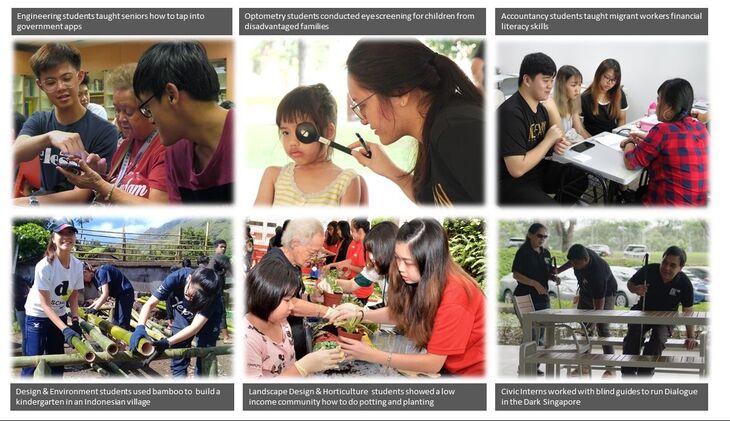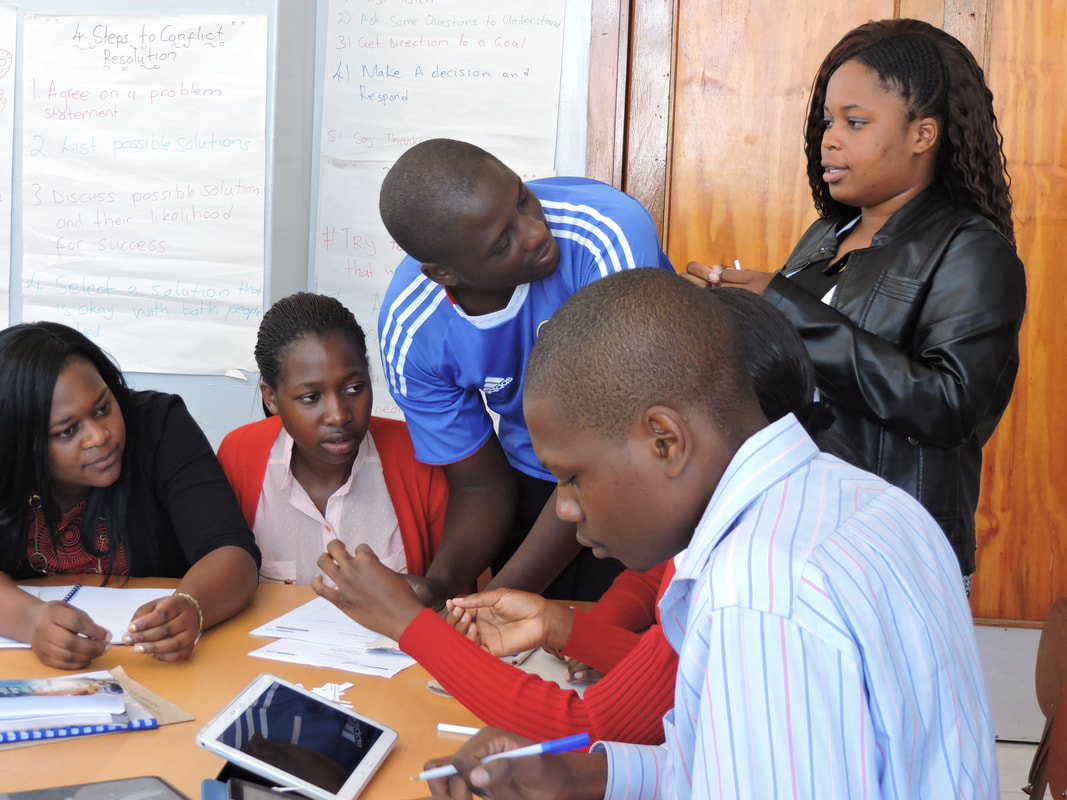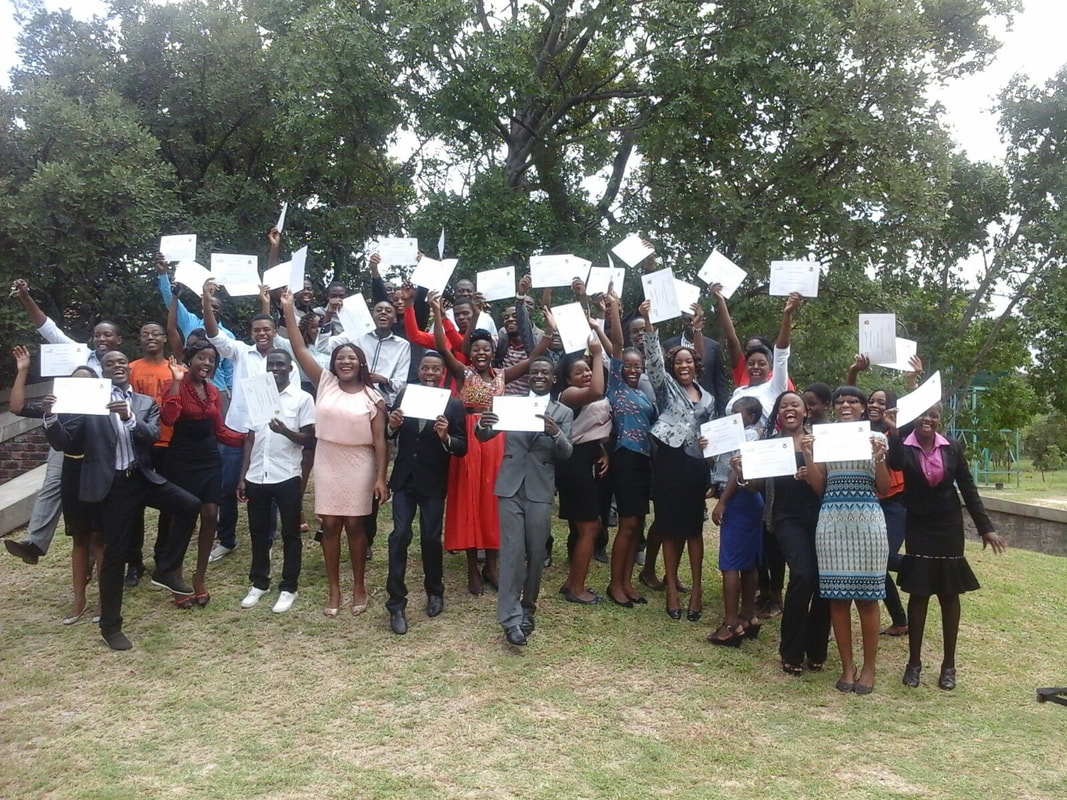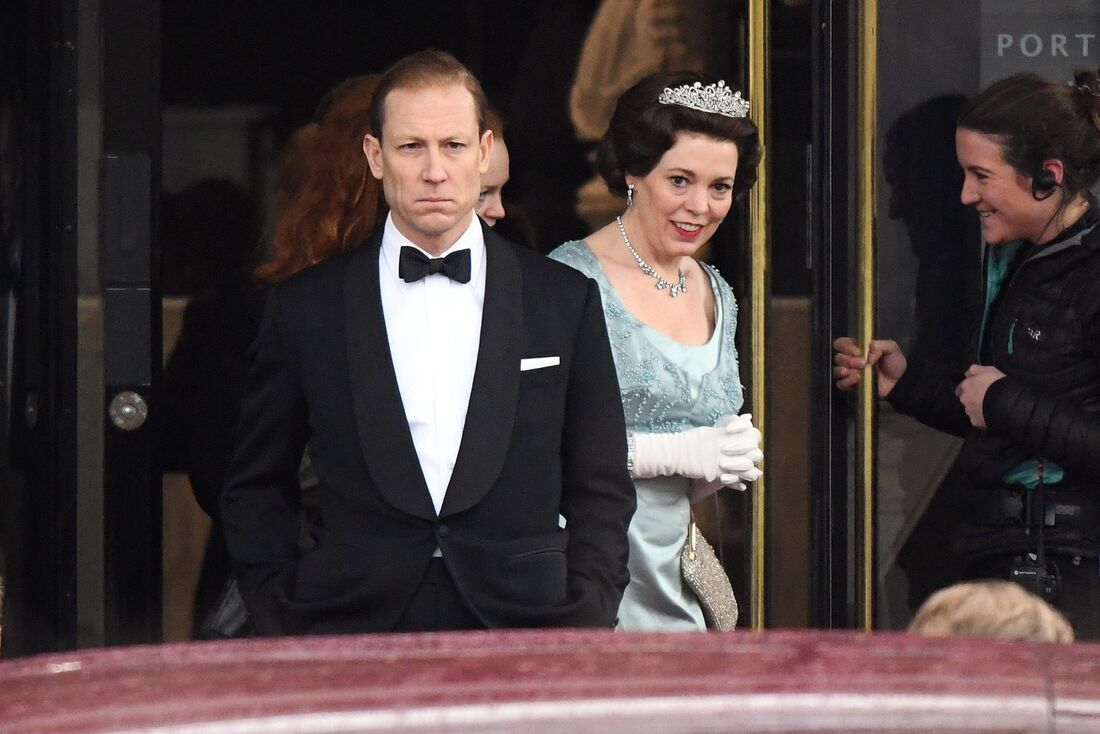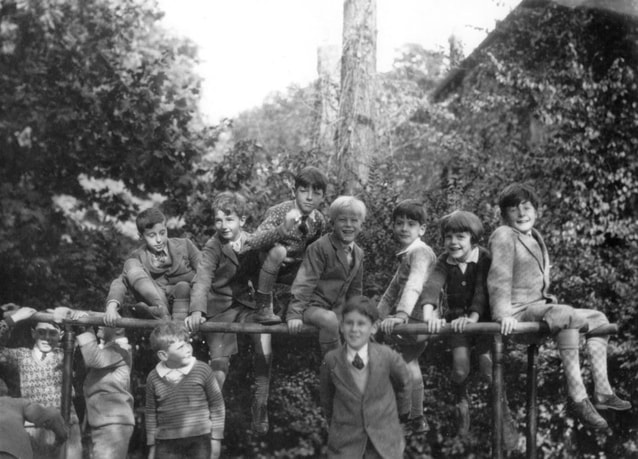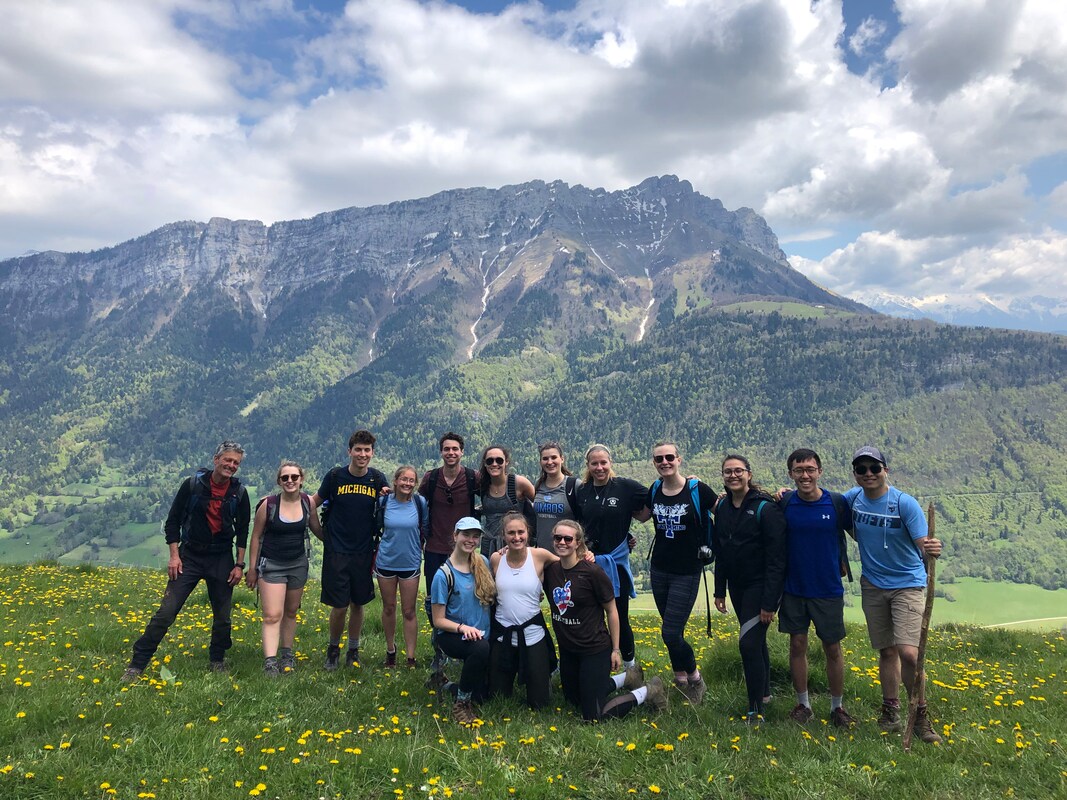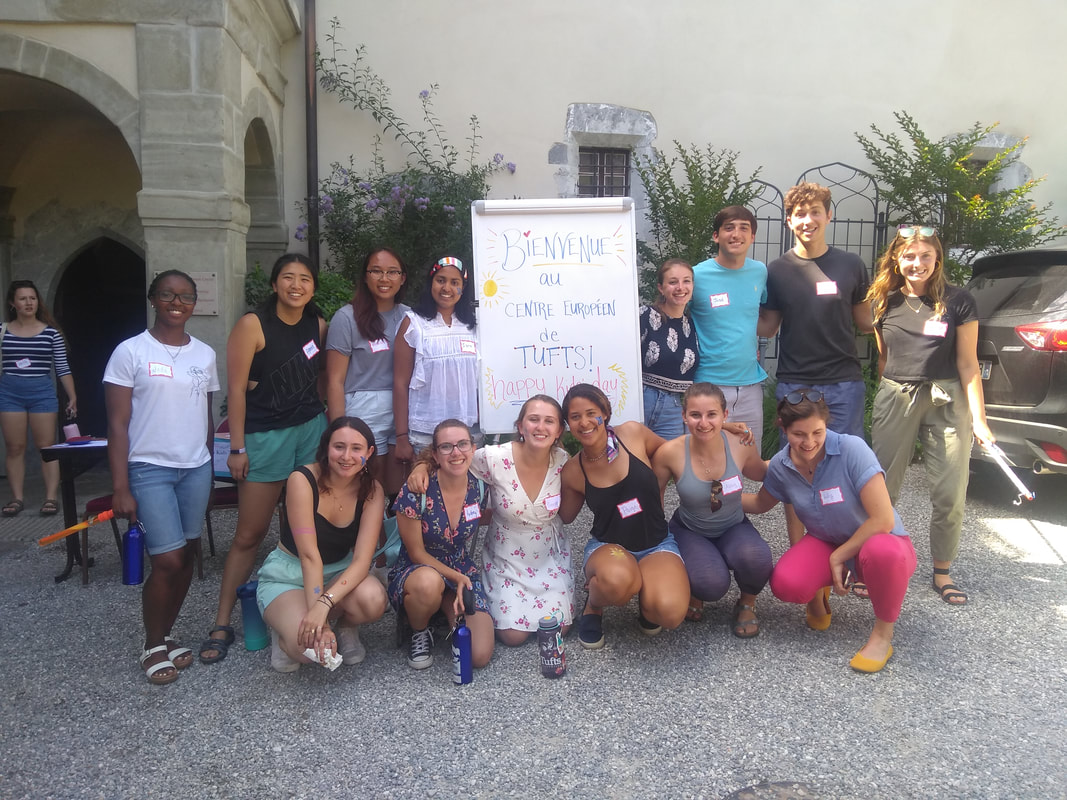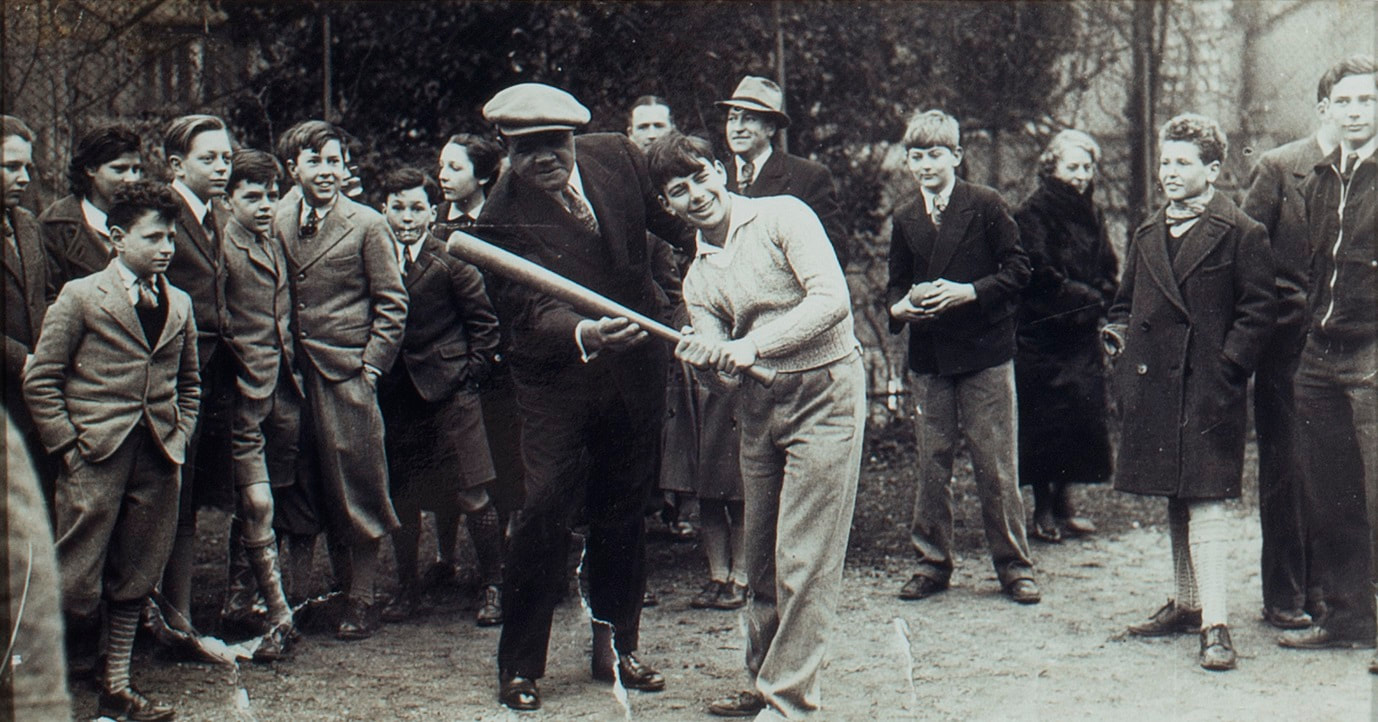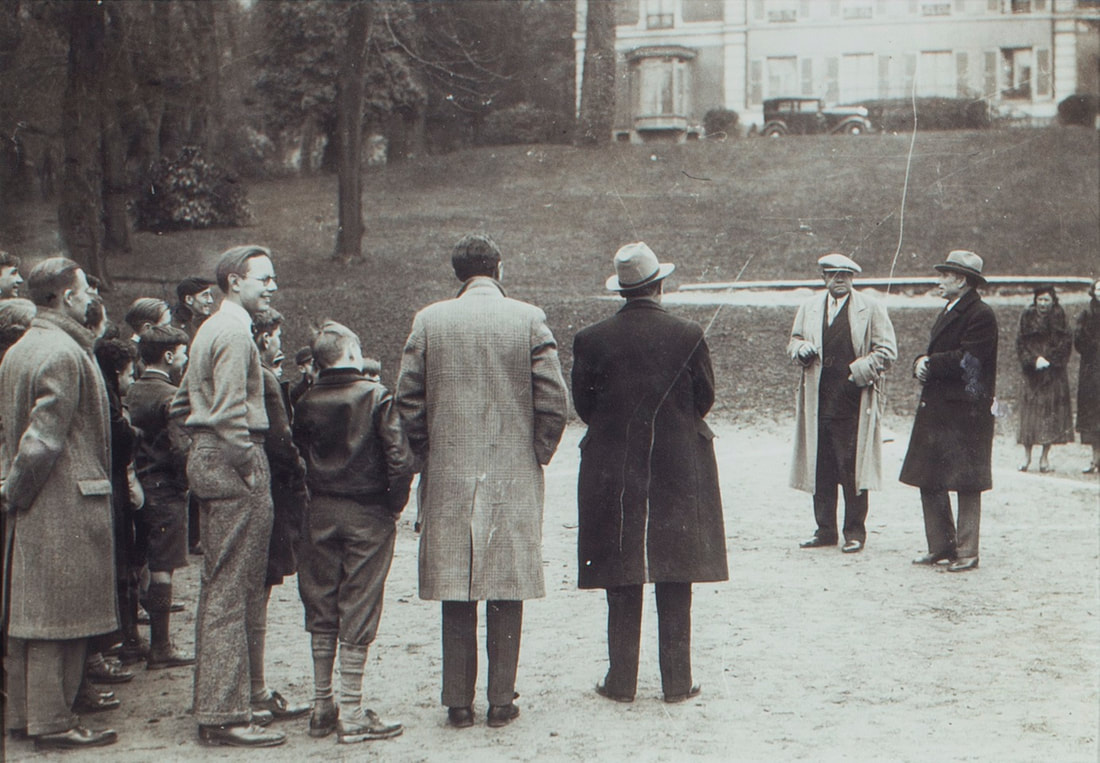
|
First Place: Service-Learning Programme, Ngee Ann Polytechnic (Singapore) Service-Learning Programme, Ngee Ann Polytechnic, Singapore, is our first place winner. In 2016, Ngee Ann Polytechnic launched Service-Learning (S-L) as its signature pedagogy, becoming the first tertiary institution in Singapore to strategically integrate S-L into its core curriculum. All students participate in at least one Service-Learning project tied to an academic course. Learn More. “Since we launched Service-Learning in Ngee Ann, we have seen our students redefining themselves, becoming advocates or volunteers for various causes, finding new contexts to frame their career choices, and developing empathy, while adding value to the communities they served with. We thank the Talloires Network for recognising our commitment to engrain Service-Learning in our campus culture and are very honoured to receive the MacJannet Prize 2020. It spurs us to aim higher in Service-Learning and to share our experiences with other institutions.” – Clarence Ti, Principal, Ngee Ann Polytechnic, Singapore Second Place: paNhari Program, University of Zimbabwepa (Zimbabwe) Nhari Program, University of Zimbabwe, is our second place winner. paNhari, established in 2005 as a student-led project, empowers university students to become civically engaged through social entrepreneurship and to use innovation and business principles to improve the world. Learn More. “It is an honor to receive the MacJannet Prize, particularly during this time of the coronavirus pandemic as we have been reminded that thinking of countries, let alone communities, as separate from one another is fundamentally flawed. We are all connected and are better off with an inclusive mindset that encourages civic engagement. We are deeply grateful for this initiative and are invested in its success!” – Phil Mlanda, Co-Founder, paNhari Third Place: Al-Qalam Program, National University of Sciences and Technology (Pakistan) Al-Qalam Program, National University of Sciences and Technology, Pakistan, is this year’s third place winner. Al-Qalam program is a student organization that provides educational opportunities to children who are out of school due to their family’s financial limitations. Learn More. “We at NUST are extremely delighted with this honor. The Al-Qalam program has been running for four years and we feel this prize was due recognition to the students of NUST Community Services Club who have been working day and night to make sure that education becomes the number one priority of the underprivileged communities. This prize has not only boosted student-led efforts but is also a source of encouragement for the parents of the children whose education is supported by this program. Furthermore, this prize has further inspired everyone at NUST to keep serving the community as an engaged university with more passion and vigor” – Maheen Mumtaz, Assistant Manager, Community Services, NUST 2020 Honorable Mentions Pontificia Universidad Javeriana Cali’s Programa Formación Javeriana para el Cambio Social y la Paz (Colombia) earned an honorable mention. Javeriana Training Program for Social Change and Peace has integrated experiential learning and community engagement into academic programs throughout the university. Learn More. Universidad Veracruzana’s Intercultural University Student Projects (Mexico) received an honorable mention. UV Intercultural offers degree programs that generate, apply, and transmit knowledge through academic courses with an intercultural focus and ongoing community outreach projects. Learn More. The Community Health Nature Renewal Project at Muhimbili University of Health and Allied Science (Tanzania) was also awarded an honorable mention. The goal of the project is to improve the health of Tanzania’s people by planting native trees and plants back into the gardens, school grounds, roadsides, and byways of the Ilala District. Learn More. International Selection Committee
Filliam Efiti (LivingStone International University, Uganda), Ernesto Benavides Ornelas (Tecnologico de Monterrey, Mexico), Maryam Huda (Aga Khan University, Pakistan), Sara Ghouth (Effat University, Saudi Arabia), Cliona Maher (University College Cork, Ireland), and Tony Cook and Wenke Thoman (MacJannet Foundation board members).
0 Comments
June 13, 2020
Dear Friends of the MacJannet Foundation, This month’s widespread demonstrations against police abuse and discrimination have struck a responsive chord not only across America but throughout the world. In fact, social justice is an important element of what the MacJannet Foundation stands for. By striving to deepen cross-cultural understanding through education and social engagement, we hope to contribute to a world providing better and more just opportunities for all. The demonstrations remind us of lessons we learned from Donald and Charlotte MacJannet: that each of us, by standing up firmly for what we believe is right, can set examples and strong inspiration for others. When Hitler came to power in Germany in 1933, Charlotte MacJannet tore up her German passport in protest. It seemed merely a symbolic gesture at the time, but it became a major trauma seven years later, when Hitler’s army occupied France and the MacJannets had to flee with little more than the clothes on their backs. To Charlotte, that episode was not an ordeal but an opportunity to give meaning to her life, and to the lives of her friends, relatives, and students. When the MacJannets’ summer camp reopened after World War II, Charlotte’s campers were always impressed by the vigor with which she— a German native— played La Marseillaise on the piano every Bastille Day. To Charlotte, La Marseillaise wasn’t merely the French national anthem; it carried a universal message: Resist tyranny, with your life if necessary. Donald and Charlotte dedicated their lives to promoting peaceful ways to build a better world. Their method was to plant seeds among young people, who represented the world’s best hope for the future. At difficult times like the present, when health, economic and social problems are converging massively around the world, we should recall the ongoing inspiration provided by Charlotte and Donald MacJannet. Our MacJannet-inspired passion for cross-cultural communication provides a special lens as we listen to the voices of protest now raised around the world. Indeed, protestors have called upon everyone to listen, better educate ourselves and reflect on the interplay between a past -- marked in some cases by colonial legacy including slavery and segregation— and a present still marred by intolerable discrimination and racial inequities. I invite the Board and Friends of the MacJannet Foundation to join us in a conversation and rededicate ourselves to ensuring that the education and civic engagement programs we support help move the arc of history toward greater justice for all. In doing so, we will honor both the MacJannets, who have inspired us all, and the voices of today protesting continuing inequities and calling for peaceful change. Anthony Kleitz, President MacJannet Foundation 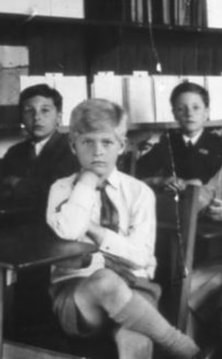 Prince Philip, as a young student at "The Elms." Prince Philip, as a young student at "The Elms." A TV series offers clues to Prince Philip’s formative years DAN ROTTENBERG For nearly seven decades, the Duke of Edinburgh has been known to the world as the self-effacing and devoted consort of Britain’s Queen Elizabeth. Now, just as Prince Philip recently announced his retirement from public life, a new TV audience has been exposed to a much more intimate (albeit fictionalized) view of him: The popular Netflix TV series The Crown, portrays the Duke as the often frustrated but perhaps best adjusted member of Britain’s perpetually uneasy royal family. Yet the MacJannet community perceives Philip through still another lens: As he turns 99 this June, Philip is the oldest living alumnus of a MacJannet institution as well as the last surviving honorary trustee of the MacJannet Foundation. As a six-year-old in 1927, Philip was enrolled at “The Elms,” Donald MacJannet’s innovative American school on the outskirts of Paris. Philip’s royal family had fled Greece during a revolution in 1922, smuggling the infant Philip out of the country in an orange crate. Philip later described his time at the Elms as “three of the happiest years of my life.” He remained in touch with Donald and Charlotte MacJannet at least through 1970s. The Duke of Edinburgh’s International Award, which Philip created in 1956, seems patterned after several key MacJannet values: It honors such activities as volunteer service, physical development, social and personal skills, adventurous journeys, and participation in a shared activity while living away from one’s home. (For more about Prince Philip’s MacJannet connection, see “Prince Philip’s school days” in Les Entretiens, Spring 2012.) The first three seasons of The Crown purport to dramatize the private life of the House of Windsor, beginning with Philip’s marriage to Elizabeth in 1947 and concluding with Elizabeth’s silver jubilee as queen in 1977. Among other things, the series reminds us that nothing in Philip’s life was pre-ordained. When he married Elizabeth in 1947, for example, the newlyweds had no way of knowing that within five years she would be thrust on the throne by the untimely death of her father, leaving Philip at age 31 as his wife’s permanent second fiddle, a role his activist masculine personality instinctively rebelled against. How Philip adjusted, or failed to adjust, makes a fascinating drama. How well the character in The Crown reflects the real Prince Philip is another story. Although it alludes periodically to his tumultuous childhood, The Crown hasn’t yet mentioned Philip’s years at The Elms. In any case, MacJannet acolytes who read between the lines of The Crown will derive added benefits from this highly intelligent and entertaining series. The following summary is offered as a quick MacJannet-oriented guide to The Crown’s first three seasons. These episodes should be accessible on the Internet as well as on Netflix itself. Season 1 (Released November 2016) Episode 1 (“Wolferton Splash”): On November 20, 1947, Prince Philip of Greece and Denmark renounces his titles and citizenship and takes the name Philip Mountbatten before marrying Princess Elizabeth, elder daughter and heir presumptive of King George VI. The newlyweds move to Malta, where Philip rejoins the British Royal Navy while Elizabeth gives birth to son Charles and daughter Anne. Four years later, the couple returns to England to be with George as he undergoes a lung operation. George later receives a terminal diagnosis and counsels Philip on how to assist Elizabeth when she becomes the new sovereign. Episode 3 (“Windsor”): As the Royal Family and the United Kingdom prepares for King George's funeral in 1952, Philip requests that Elizabeth ask Prime Minister Winston Churchill to allow their family to keep the Mountbatten name and live at Clarence House rather than at Buckingham Palace. While Churchill is reluctant to grant either request, she eventually drops them after receiving counsel from her uncle Edward, the Duke of Windsor, who abdicated he throne in 1936. Episode 8 (“Pride & Joy”): Philip grows frustrated over Elizabeth using him as a prop, resulting in a heated confrontation that is recorded by photographers. While Elizabeth convinces the photographers to surrender the recording, she and Philip remain unable to resolve their argument. Episode 9 (“Assassins”): Philip begins spending more time away from Buckingham Palace while Elizabeth begins spending time with her horse racing manager and longtime friend Lord "Porchey" Porchester. The tension escalates after Elizabeth orders a direct line be put in for Porchey, resulting in another heated argument. Elizabeth later tells Philip he is the only man she has ever loved, prompting him to mouth an apology. Episode 10: (“Gloriana”): The Queen Mother complains about Philip's domineering attitude toward his eldest son, Prince Charles. Elizabeth asks Philip to open the 1956 Summer Olympics in Melbourne as a way of adjusting to life in her shadow. A five-month royal tour is later added to the itinerary, with Elizabeth suggesting Philip be thankful that everyone is helping him find a public role. Season 2 (Released December 2017): Episode 1 (“Misadventure”): In February 1957, Elizabeth and Philip discuss the state of their marriage, with both acknowledging that divorce is not an option. Five months earlier, as Philip prepares to embark on his royal tour, Elizabeth becomes convinced he is having an affair. Episode 2: (“A company of men”): Philip continues his tour, punctuated by an interview that he terminates when the reporter asks about his family history. At Christmas, Philip delivers a heartfelt radio address, prompting Elizabeth to let him know his family is waiting for him as part of her own Christmas address. Meanwhile, the divorce of Philip's private secretary on infidelity grounds feeds press speculation about Elizabeth and Philip's own marriage. Episode 3 (“Lisbon”): Elizabeth brings Philip’s royal tour to an end before meeting the royal yacht Britannia in Lisbon and privately talking with Philip about their marriage. Philip makes it clear he resents his son Prince Charles outranking him and wants more respect from both the courtiers and the palace staff. On February 22, 1957, Philip is made a Prince of the United Kingdom, with the style "His Royal Highness Prince Philip, Duke of Edinburgh." Episode 9 (“Paterfamilias”): Philip arranges for Charles to attend Gordonstoun, Philip’s old school in Moray, Scotland, despite protests from Elizabeth. who prefers Eton College. (Gordonstoun was founded in 1934 by the German educational reformer Kurt Hahn, who was said to be friendly with Donald MacJannet; it reflected many aspects of Donald’s belief in outdoor activities and “learning by doing.”) Philip gets his way after using his deal with Elizabeth to compel her to support him. While taking Charles to the school, Philip recalls his time at Gordonstoun as well as the death of his older sister Cecile and her family, for which his father Prince Andrew blamed him. Charles struggles with Gordonstoun's rigorous curriculum. Philip takes Charles home, admonishing him for being "bloody weak" after an attempt to give him a pep talk fails. Season 3 (Released November 2019): Episode 4 (“Bubbikins”): In 1967, Elizabeth learns that Prince Philip’s senile mother, Princess Alice, who has been living in Athens, Greece, is in endangered by the recent imposition of military rule. (It was Alice who enrolled Philip at Donald MacJannet’s school in 1927.) Elizabeth arranges for Alice to come to the United Kingdom and stay at Buckingham Palace despite Philip's protests. While looking after Alice, the royal family participates in a documentary to show they are normal people. Critics ridicule the documentary following its airing, prompting Philip to arrange an interview with The Guardian. The reporter, however, interviews Alice instead; and the subsequent article is published to success, resulting in Philip making amends with his mother. Episode 7 (“Moondust”): Amid the first moon landing (1969), Prince Philip feels dissatisfied with his lack of achievement and searches for inspiration. When the Apollo 11 astronauts visit Buckingham Palace, Philip arranges a private interview, only to be disappointed by their mundane replies. They in turn ask him what it’s like to live in Buckingham Palace. At Philip’s urging, Elizabeth replaces the Dean of Windsor Castle with Robin Woods, who opens a new “religious academy for personal and spiritual growth”— a euphemism for burned-out clergymen— on the castle grounds. Philip is invited to take part in the group’s therapy sessions, and although he resists at first, he eventually shares his experience with the group. (In real life, Philip and Woods created St. George’s House on the grounds of Windsor Castle three years before the moonwalk— in 1966, just a few years after Charlotte MacJannet launched a similar series of Entretiens gatherings at the Prieuré in Talloires.) With Prince Philip’s continuing support, St. George’s House survives today as a refuge where people of influence and responsibility— like Philip himself— can come together to get in touch with their feelings. This episode, like the whole series, leaves some questions unanswered. To what extent was Philip influenced by Donald and Charlotte MacJannnet? And if Philip perceived the benefits of therapy as early as 1966, why didn’t he apply this insight for the benefit of his own psychologically damaged children, most notably Prince Charles? Perhaps these will be addressed in The Crown’s fourth season, expected to be released in November 2020. MacJannet Scholars recall Tufts in Talloires, summer 2019 GABRIELLA GOLDSTEIN Every summer, the Tufts University European Center organizes the Tufts in Talloires program, a six-week academic program for Tufts undergraduate students. Its students— 84 in summer 2019— receive a unique combination: two credit-bearing Tufts University courses from a range of disciplines, plus the opportunity to live with a French host family and inhale firsthand experience of French culture. In keeping with Donald MacJannet’s belief in learning by experiencing, all the classes offered in Talloires connect in some way with the Haute-Savoie region to give students an experiential component to their coursework. As students have become more globally minded, the popularity of our program has grown. The Tufts in Talloires Program has become an important (and sometimes the only) vehicle for Tufts students to live abroad and to discover the world beyond what they’ve always known. The MacJannet Foundation has been instrumental in making this possibility a reality for many students through its generous annual support of the Tufts European Center’s scholarship fund. Last summer, the MacJannet Foundation’s grant of $38,000 helped the European Center offer financial support to 26 students who might not otherwise have been able to travel to Talloires. These “MacJannet Scholars,” in turn, help ensure a more diverse student community for the Tufts in Talloires Program, something that enriches our own community while also teaching our French neighbors and hosts about the richness and diversity of American students. Every year, we on the Tufts staff see how six weeks in Talloires can exert a profound and long-lasting impact on students’ lives. Last summer’s MacJannet Scholars reflected on their experiences. Excerpts of their comments are below. Gabriella Goldstein has served as director of the Tufts University European Center in Talloires, France, since 2002. Misgivings averted I was originally very hesitant about coming, because six weeks is a long time, I don’t speak French, and I was nervous about classes. Looking back on my time here, it would have been a huge mistake not to come. I have met so many people that I otherwise would not have met at Tufts, and the memories I have made here are irreplaceable. Outdoor activities I loved being in Talloires. I loved that everyone wanted to be active and outside all the time. There were so many activities to participate in. I went hiking a few times, swam in the lake on every sunny day, and made a lot of new friends. Liberating experience Being in Talloires is very freeing. It teaches you more than you could think about what you value in life, particularly outside of academics. Developing confidence Overall, the Tufts in Talloires program did force me to get out of my comfort zone and interact with new people. While this was occasionally overwhelming, it has taught me how to have greater confidence in myself. More relaxed than Medford A great opportunity to immerse yourself in a different culture, eat French cuisine, talk to locals, hike up the Alps, and take a course in a more relaxed environment than what you would experience in Medford. No more beautiful place There is no more beautiful place in the world to dive head first into fast-paced but extremely interesting courses. Beyond my major The classes I took were super interesting. I loved learning about topics outside my major, like art history and alpine flowers! Family, friends, freedom I had a lovely time exploring the city of Annecy, the town of Talloires, and other surrounding areas (Lyon, the mountains in this region, parts of Italy, etc.). My host family also greatly enhanced my experience by allowing me to join in on their plans if I wanted, but also giving me the freedom to do whatever I wanted. Kindness = Happiness Everyone was super kind and happy to be there! It has always felt like such a healthy, pure, and friendly environment, which just creates a feeling of happiness. New friendships I formed friendships that I never would have otherwise, despite my worries that I didn’t know enough people before I got here. Biking and hiking Some highlights for me were biking around the lake, going on some of the hikes, and trying all the amazing food. Supportive community The staff and other Tufts students are here to help you through all the uncomfortableness of being in a new country. It is incredible how many people I have met through this program that I had no idea were at Tufts. I cannot wait to go back to campus and see all of them. Flowers and children I loved interacting with the kids of the village and hiking in my flowers class. Flowers class made me feel like a little kid again, because I haven’t had such an immersive science experience since elementary school. One of the most special experiences I had was visiting my host dad’s class of six-year-olds and reading books to them. Trip of a lifetime I had the exquisite pleasure of living in this country for six weeks as someone who does not know a lick of French. I swam in the lake all the time, I studied for my classes, I explored old Annecy, I met new people and made new connections, accumulated new habits, and learned so much about myself. Life at a different pace The pace of life and culture in Annecy is really different from the States, which gives you a chance to slow down and reflect on life. The academics here are rigorous but fun. Exploring on my own Due to the location of my house, my commute was nearly an hour and a half. This meant that every day, twice a day, I got to experience Annecy and Talloires on my own. The lure of Talloires Talloires is truly a magical place. You will immerse yourself in a new culture and grow so much in just six weeks. You become a part of a family, both with your host family and with the students who are with you. Instead of junior year abroad…. It was especially nice because I made the decision not to go abroad during my junior year, and this ended up being the perfect fit for me. It was a great balance of the freedom of most abroad programs while also retaining the comfort of the Tufts community. More than food and mountains It would be a shame if someone comes to Tufts in Talloires only for cheese, wine, and baguettes. Exchange programs should do more than just confirm preconceived stereotypes. During my interaction with my host family, I learned so much about French political dynamics and cultural aspects, which are never mentioned outside of Europe. I think these cultural exchanges are the most valuable components of the program, rather than superficial concepts like food and mountains. Exploring on foot I lived in Les Granges, close to Talloires, and really enjoyed being so close to town. It was wonderful to walk to class and go to the beach afterwards, or have picnics with my host family by the lake. It was amazing to get to study in such a tranquil and idyllic place. All this in one program I was immersed in French culture and everyday life with my host family and learned more about what makes the Haute-Savoie region so unique. I met students and faculty whom I might not have crossed paths with back in Medford, and I spent time resting or reading by the beach. And I did this all within the comforts of a Tufts-run program, which made it easy to adjust to. My new normal It still blows my mind, walking to school each morning, that these views, these people, this food have all become my normal daily routine. Trying new foods I loved hiking, lying out on the plage, wandering around Annecy, and trying new foods (I tried duck, rabbit, escargots, beef tartare, and frogs’ legs here -- all for the first time). Slower pace Compared to the fast-paced life Americans have, France was so much different. After class, I could just sit by the lake and listen to the wind rustling through the leaves or hear the sound of water undulating in the wind or watch the clouds make their way past the mountain peaks. Being able to take in everything here in France made me more relaxed and more open to new scenery as well as a plethora of other possibilities. Beyond clichés Getting to know French people and learn about their culture was awesome, and they were so accommodating (the clichés are not true!) Looking inside yourself Take advantage of every opportunity, whether that means doing a hike with Pierre, going into Annecy with friends, or practicing your French at a grocery store. Traveling is a unique experience that really allows you to see those qualities in yourself that stay and which ones don't. Wonders of Annecy The cool thing about Annecy is that it is an entire metropolis, with an extensive old city, a downtown, parks, shops, restaurants, Michelin star restaurants, beaches, promenades, and even a regional university, all packed into only a few square miles. This meant that it was very easy to walk anywhere in the city, and that there was always a lot to see. A remedy for routine It is a great way to get out of the routine that we are all used to in Medford. Apprehensions relieved Arriving in Talloires, I was pretty nervous about my classes, meeting new people, and living with a family who speaks a different language. However, upon reflection, I had nothing at all to worry about. The best part Absolutely, the classes are actually the best part. Ancient Gaul engaged my interest every second, every reading, and every discussion. Professor Hitchner's passion for Rome, Gaul, and the Ancient world is truly contagious. Dance and movement was a wonderful adventure and an unparalleled experience of connection and self-growth that allowed me to breathe in the full experience of Talloires. Open mind, open heart Come with an open mind, an open heart, and a desire to explore and learn. Don't judge a cheese by its smell; taste it first... trust me. Enjoy every second you get to spend in class, in Le Prieuré, or even having midnight herbal tea with your host family! A long, storied legacy It was amazing to learn, while watching the video narrated by Andrew McClellan, how much we are part of a long, storied, and amazing legacy by being part of this program, and I was touched by that. DAN ROTTENBERG
It’s a treasured piece of MacJannet folklore: The great Babe Ruth, the most dominating figure in the history of Major League Baseball, once visited the MacJannet American School— better known as “The Elms”— at St.-Cloud, outside Paris. That such a visit actually took place seems indisputable, as the two photographs reproduced in this issue attest. In one, the Bambino provides a star-struck student with a lesson in how to hold a bat while the boy’s delighted classmates and teachers look on. (The woman at right, who seems less impressed, may be Donald MacJannet’s new wife, Charlotte.) In the other photo, Ruth chats with Donald MacJannet while the main Elms building looms in the background. When Charlotte MacJannet donated these photos to Tufts University in 1993, her cover letter remarked, “During his visit, Babe Ruth hit a baseball, from where he and Donald were standing, over the roof of the school, a superb home run.” This brief snippet by Charlotte constitutes the only known firsthand account of Ruth’s visit to The Elms. Precisely when did this memorable visit take place? (Charlotte’s letter mentions only that it occurred “during the mid-1930s.”) More important, how did Donald MacJannet manage to attract such a superstar to his unpretentious school? Those questions, long shrouded in mystery, may finally have been answered, thanks to some detective work by your intrepid Entretiens staff. For one thing, Donald MacJannet enjoyed an extensive network of high-powered contacts. As proprietor of what was virtually the only American-style school and camp in Europe, he appealed uniquely to American movers and shakers— business executives, diplomats, army officers, show business celebrities who were stationed in Europe with school-age children. (For a list of celebrity parents at the MacJannet school and camp, see Les Entretiens, Spring 2014.) The 1982 Herb Jacobs biography of Donald MacJannet, Educator of Kings, mentions Ruth’s visit only in passing, citing him merely as one of the school’s many notable visitors. “MacJannet brought many visitors,” Jacobs wrote, “usually for lunchtime talks and informal question sessions. Dr. Wilfred Grenfell, the famous ‘Labrador doctor,’ told of his experiences treating fishermen on that icy outpost. His son, Wilfred T. Grenfell, was later a teacher at the school for a year and a [camp] counselor for three summers. ‘Babe’ Ruth, the New York Yankees’ home run king, gave the boys a lesson on what a bat could do in the right hands. General Henri Gouraud, military governor of Paris, spoke at the school and donated his library of books in English inscribed to him by American authors. The Nazis later burned all the Elms books. The famous and witty French scholar André Maurois spoke twice, in English. Two famous fliers appeared. Though Charles Lindbergh signed a photo but did not come, Amelia Earhart, first woman to fly the Atlantic solo, came to the school. She was brought by Colonel Frank Lahm, then military attaché at the U.S. embassy in Paris.” Still, what attracted Ruth to The Elms? Biographies of Ruth are less than fastidious about such details, tending to rely on secondary sources. In Babe Ruth: A Biography (2006), Wayne Stewart writes: “In 1934, after making a trip to Japan to play against some Japanese college teams and All-Stars, the Ruths decided to return to the United States via Europe because he had never trekked to that continent. Ruth found Paris to be a disappointment because, accustomed to being recognized and idolized by fans everywhere, he complained that he wasn’t noticed there, mumbling, ‘Nobody gave a damn.’ It would seem that instead of seeing the sights, Ruth was more concerned about being seen.” Here we find a likely motive for Ruth’s visit to the Elms: ego-gratification. As an institution full of baseball-happy American boys, The Elms was perhaps the one place in Paris where people did give a damn about Ruth— where he was guaranteed to be appreciated and adored. (If indeed Ruth really traveled from Japan to Paris, perhaps he was also groggy from the trip, whether by train or plane.) As for the date: Karl Wagenheim’s 1974 biography, Babe Ruth: His Life and Legend, mentions a visit Ruth paid to Paris early in 1934, probably in January. It says that one day Ruth went over to the “American Boys’ School,” where he knocked out fly balls in the playground. At first glance this would appear to refer to some school other than the Elms. But a Google search turned up an Associated Press dispatch from Paris, dated January 18, 1935, concerning Babe Ruth’s visit to that city. This dispatch, it’s clear, must have been the source of the description in Karl Wagenheim’s biography. That book had Ruth visiting "the American Boys’ School,” which suggests a specific institution. But this AP dispatch says Ruth visited “an American boys school.” One can comfortably conclude that this school was indeed the MacJannet American School at St. Cloud (although, to be sure, the MacJannet school admitted girls as well by this point). This conclusion is supported by the clothing worn by the adults pictured in the photos. The men are wearing coats; the women are wearing fur coats. It’s clearly winter. On the date of his visit, Ruth was three weeks shy of his 40th birthday. His fabled career with the New York Yankees was already over; the team had traded him to the Boston Braves after the 1934 season. His last Major League game, on Memorial Day 1935, was barely four months in the future. In the twilight of his career, this aging hero offered a priceless experience to the students at The Elms; and they, in their adulation, provided him with something of value as well. |
© 2019 MacJannet Foundation. All rights reserved.
MacJannet Foundation
396 Washington Street, Suite 200
Wellesley Hills, MA 02481
MacJannet Foundation
396 Washington Street, Suite 200
Wellesley Hills, MA 02481

